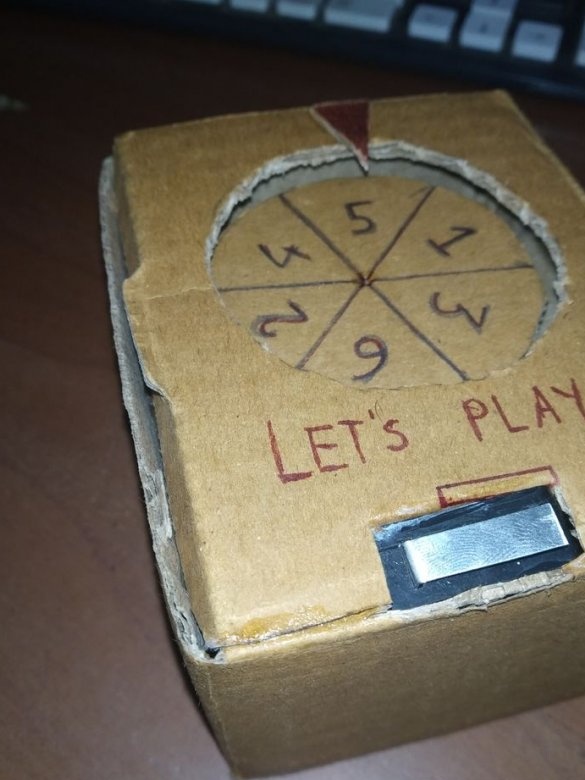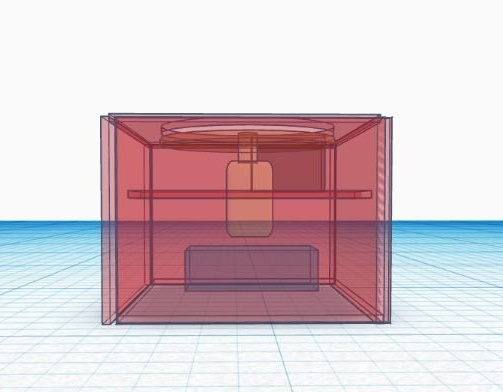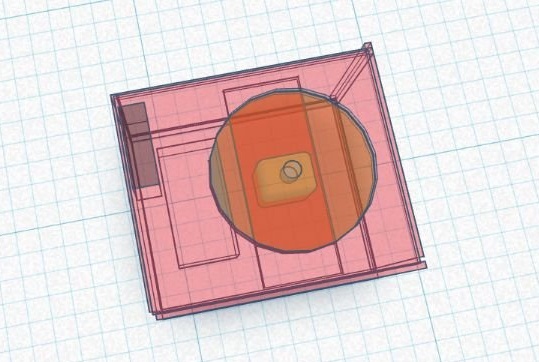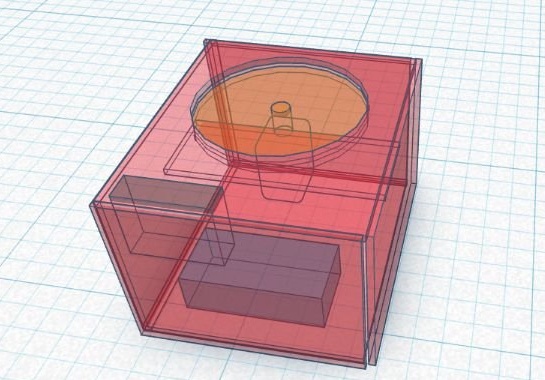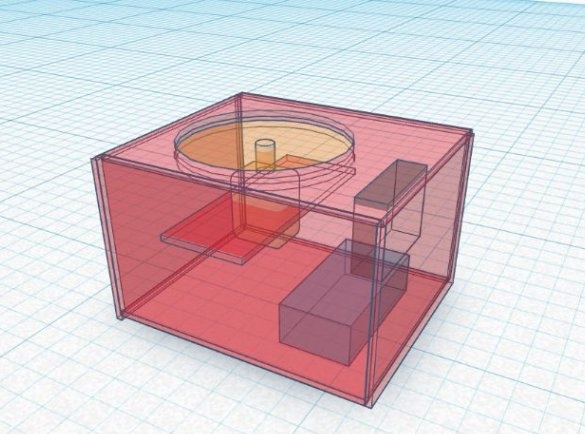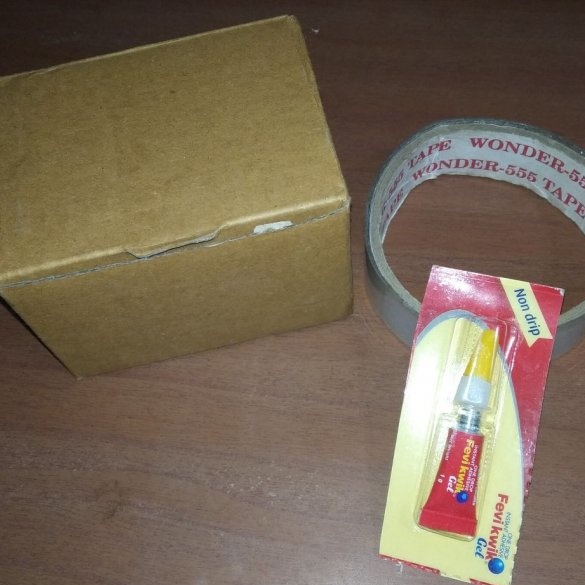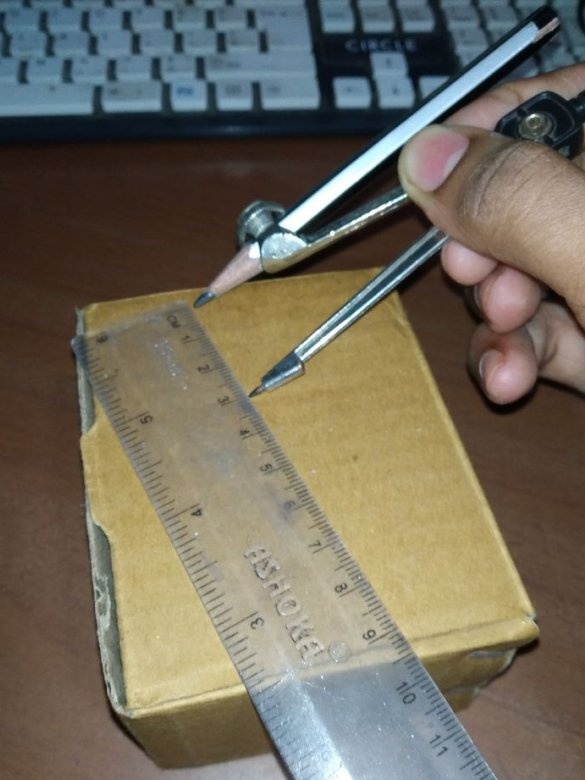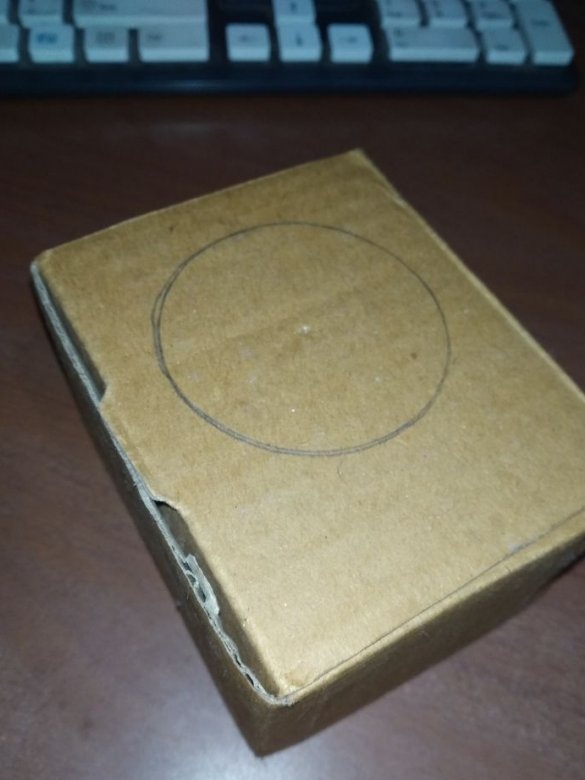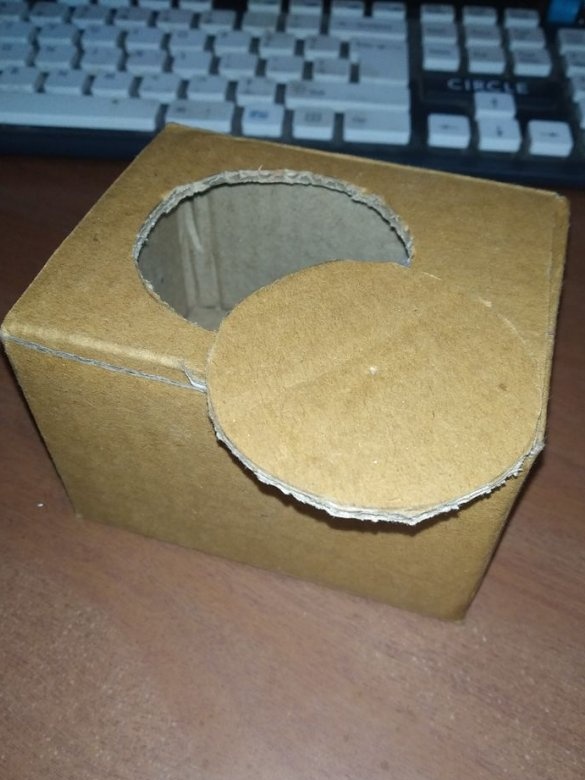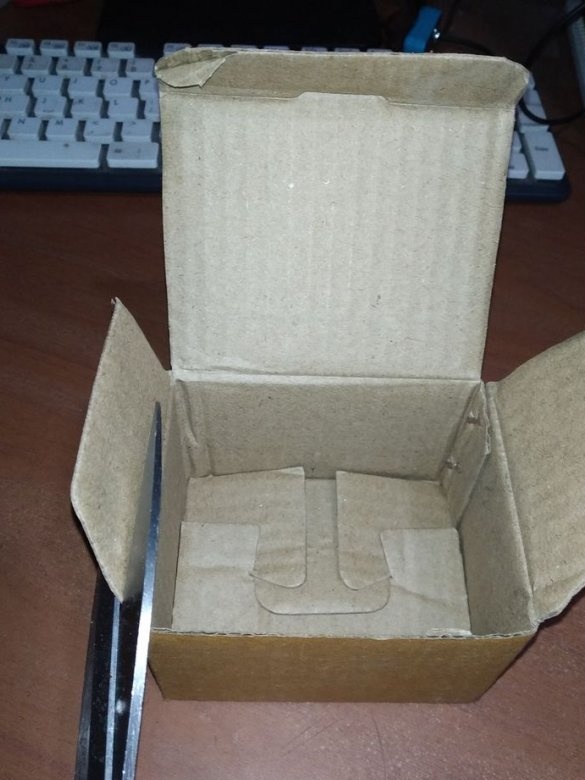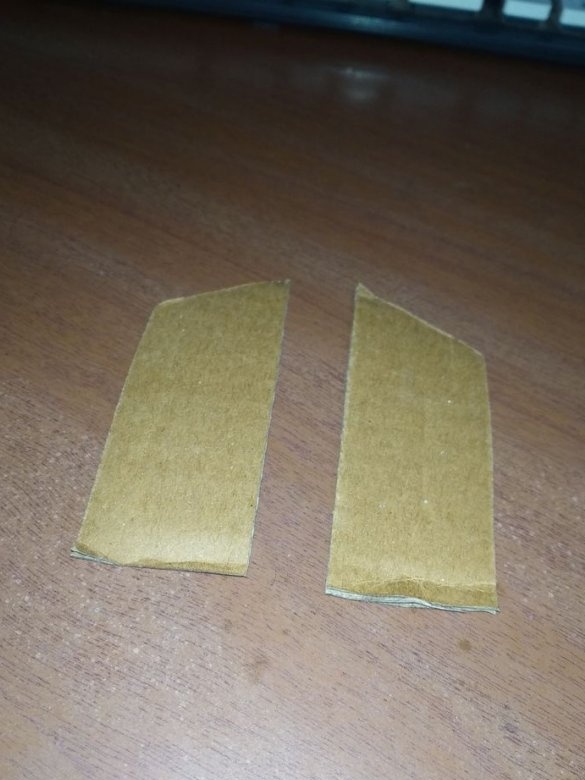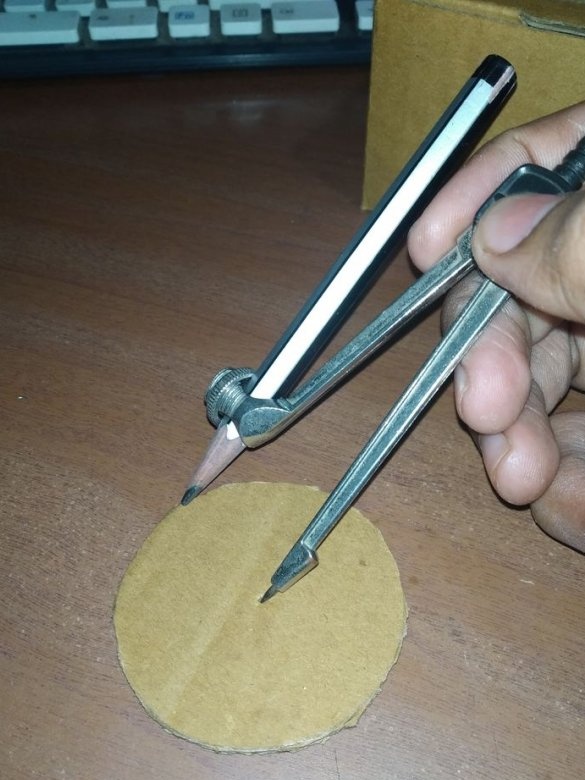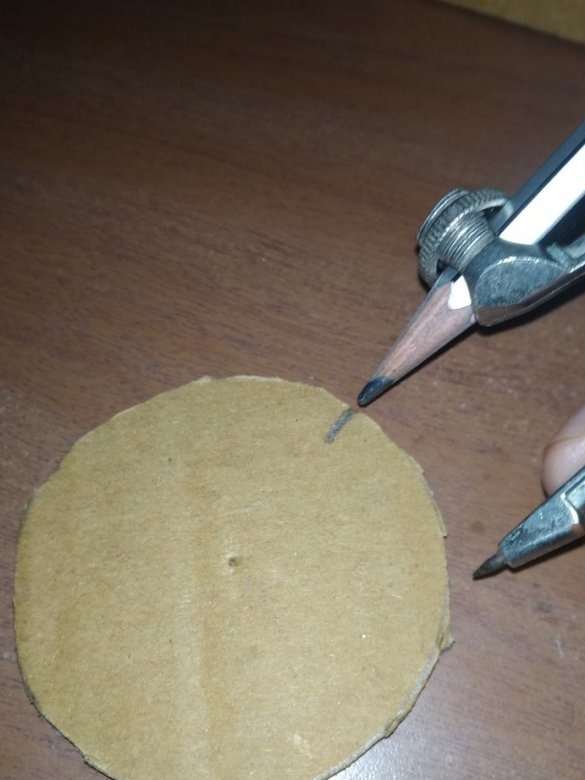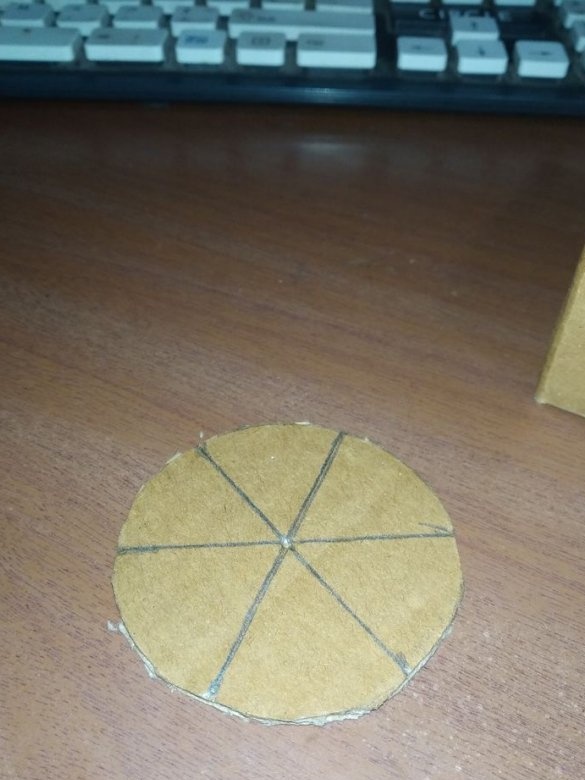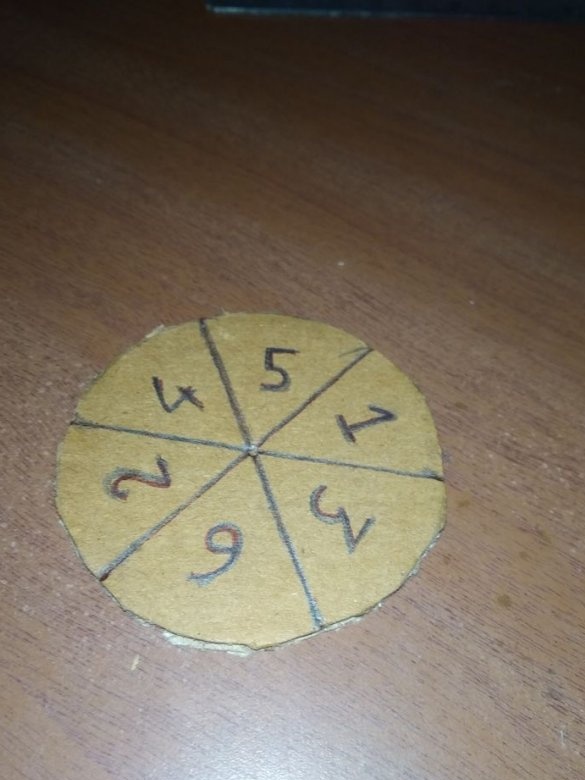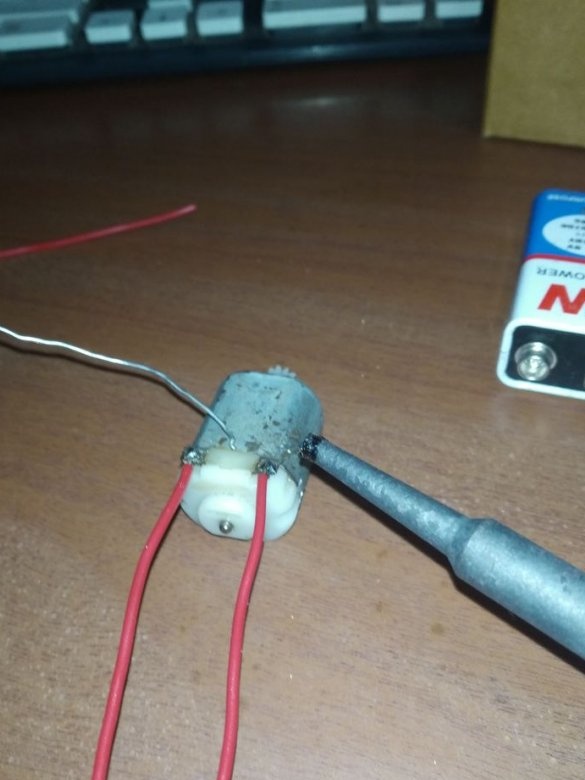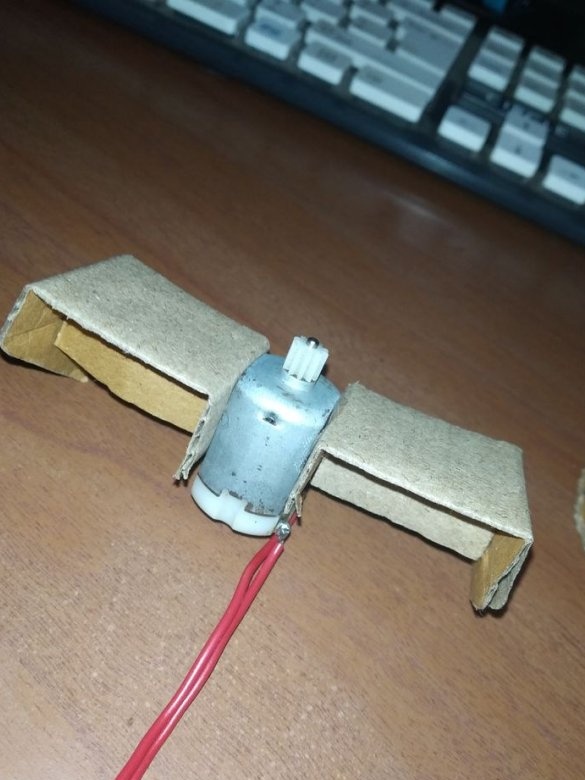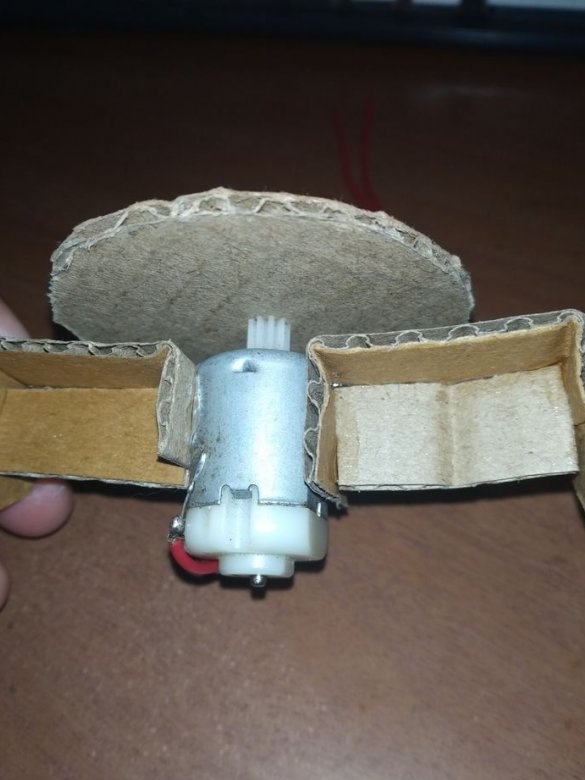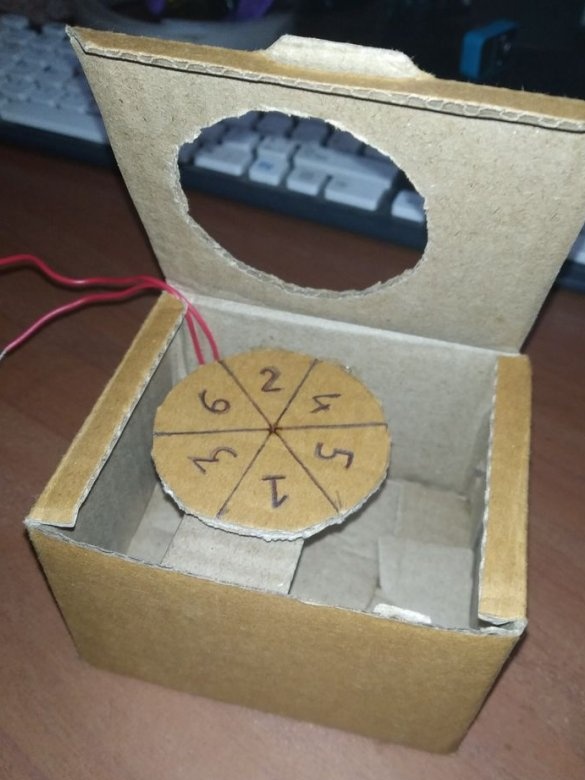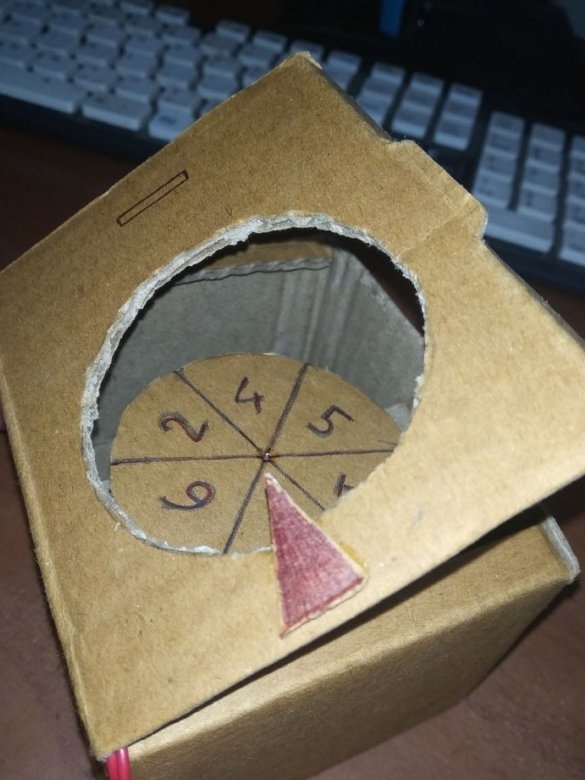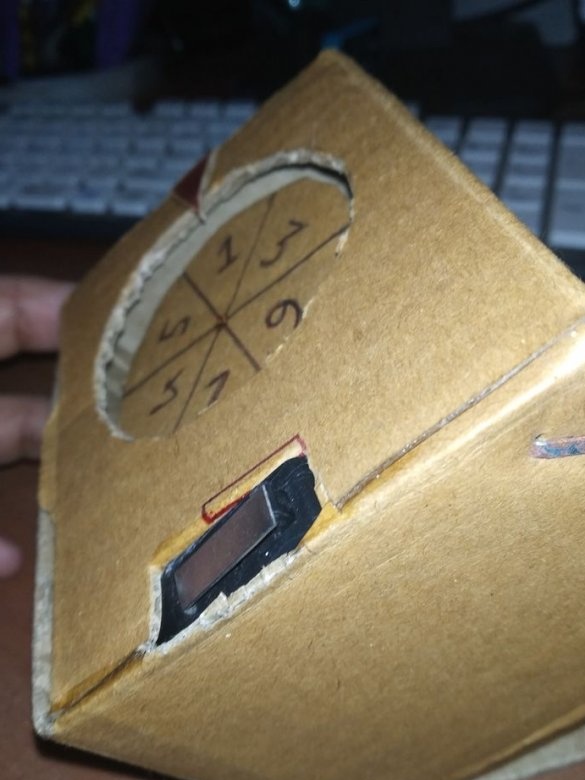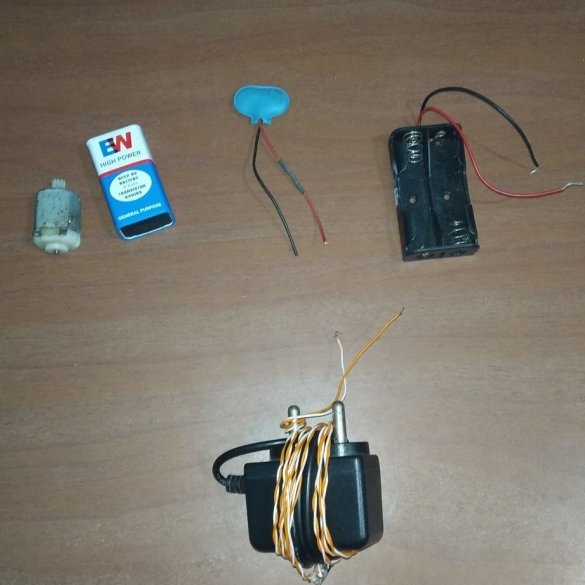Following the phonograph records and compact cassettes, board games are reviving. To determine how many steps to move the chip, the dice help in them - regular or electronic. The author of Instructables under the nickname jatin_D offers an intermediate option - electric.
Tinkercad is a universal thing. Do you want - Arduino Feign if you want - make a three-dimensional sketch homemade from cardboard. Here is the engine, the base on which it rests, a dial with numbers, a button, a battery. To consider model on all sides possible. But Tinkercad is resource-intensive, if it runs slowly on your device, look at the screenshots:
As the body of the electric moral bone, the master takes the finished box:
Its dimensions are 80x100x60 mm, so jatin_D decides to make a hole for observing a disk with a radius of 30 mm:
Draws a circle with a compass:
Cuts, receiving at the same time a disk:
Amputates a box of ears:
And recalls tube school geometry. If you measure the radius of the disk with a compass ...
And then transfer it to the perimeter ...
Then you can divide the disk into six identical sectors:
The master numbers them:
Solder wires to the engine:
For which glues the mount from the "amputated" "ears":
Glues the disk to the gear on the motor shaft:
Glues the engine together with the mount and the disk into the box so that the disk is exactly under the hole in the cover:
Sticks a pointer:
Sets a standard microswitch with a lever to reduce the actuation force:
It connects the power supply, micro switch and motor in series. You can install the holder for the “Crown”, the compartment 2xAA or 2xAAA, or connect the power supply. It all depends on what voltage the engine is designed for:
You can check:
It remains to make so many more similar devices so that their number corresponds to that specified in the rules of the board game. And you can forever forget about the cubes that fell under the table. The plumber is not a watchmaker; he does not need to spend half his life under the table.

